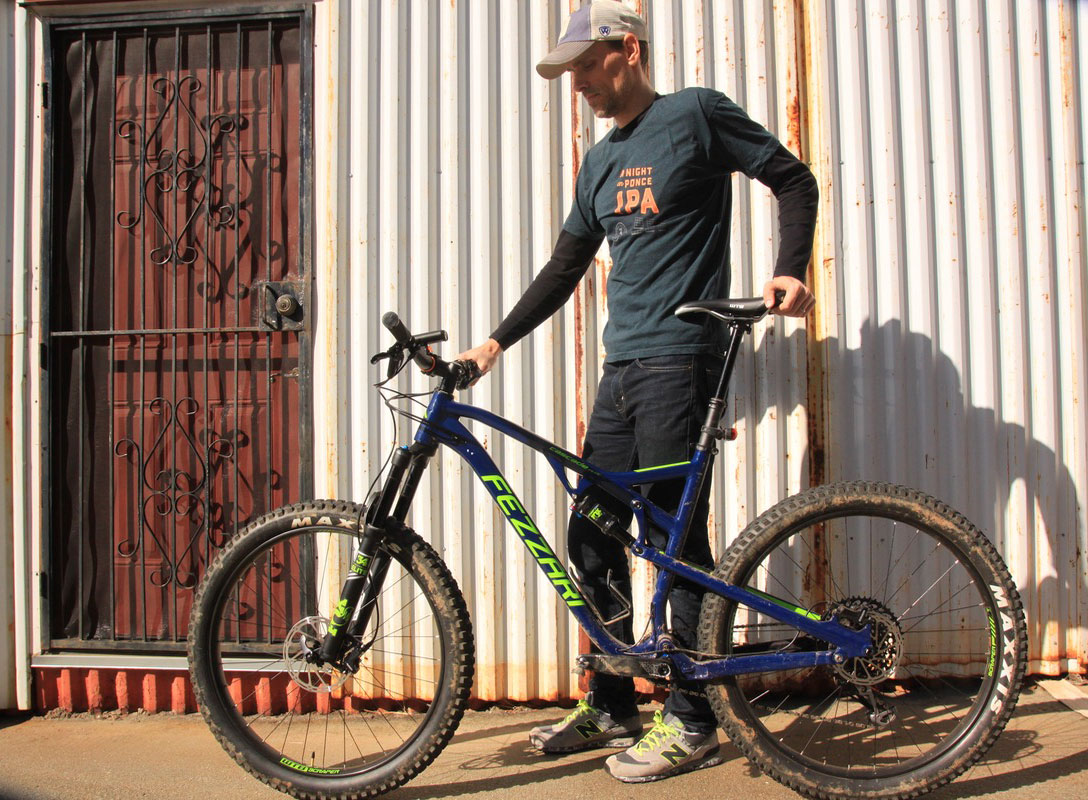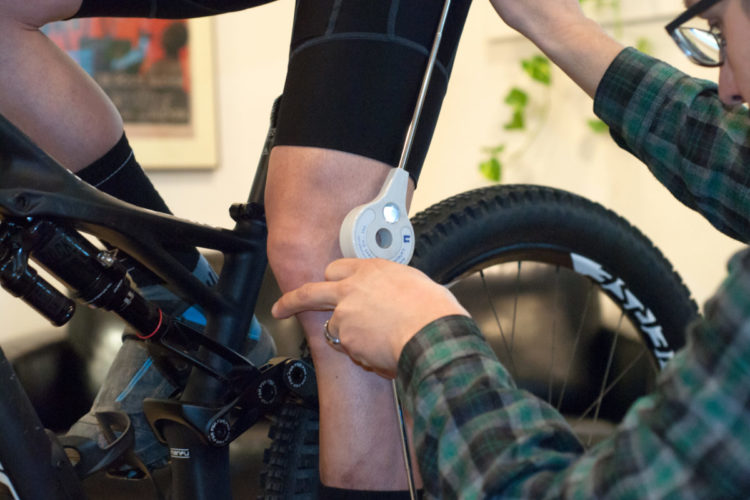
In terms of bike fit, seat height is easily the most basic and perhaps the most important measurement to get right. With the correct seat height, riders will be more comfortable and able to produce more power than with an improper setting. The good news is, it’s easy to find the right saddle height, which can be used on pretty much any mountain bike.
Why is mountain bike seat height so important?
For starters, an improperly set mountain bike saddle height can lead to joint pain, muscle soreness, and even saddle sores. Most riders tend to set their seat height too low, which results in burning quads on the climbs and overworked joints. By raising the saddle up, the rider is able to get more extension out of their leg muscles, and the knee joints aren’t forced to bend as sharply.
On the flip side, a saddle that is raised up too high can lead to pulled hamstring muscles, hyperextended tendons, and even achilles and other foot problems. Not only that, cornering and handling suffer as the rider’s center of gravity moves higher off the ground.
Beyond comfort and handling considerations, seat height plays a large role in power transfer on the bike. With the right saddle height, riders are able to produce the optimal amount of leverage with every pedal stroke, avoiding the muscle fatigue that is particularly associated with seat heights that are too low.
How do I find the right height for my saddle?
There are a couple easy of ways to get the right saddle height for a mountain bike. Both of these methods will help riders find a starting point, but it’s important to make refined adjustments based on feel.

Start at the Hips
One quick and easy way to find the right saddle height is to simply stand next to the bike and set the saddle even with the top of your hip bone. It’s best to do this while wearing normal biking shoes since this will affect the distance from saddle to pedal.
I found this method to work pretty well on a full suspension bike I’m currently testing. Of course, every bike has a slightly different static bottom bracket height, so this method will work better on some bikes than others. Remember, this is just a starting point, and once an exact seat height is determined, that measurement can be transferred to any bike, regardless of bottom bracket height.
For riders who are used to riding with a saddle that’s too low, hip height may come as a bit of a shock. At least give this a try, and if after a short ride it feels uncomfortable (or unsafe), drop the height half an inch and try again.

Measure Your Inseam
If you know your inseam measurement, you can multiply that measurement by 0.883 to get a rough idea of your saddle height (ie, the distance from the center of the bottom bracket to the top of the saddle). Personally, I’m not super confident in this number for a few reasons:
- Everyone calls this a “rule of thumb” or a “rough” estimate for saddle height, but the precision of the number (to the thousandth!) implies that it is very precise. Don’t be fooled–it’s just a starting point and is based on averages.
- Not everyone agrees on how inseam should be measured for this calculation. Should riders use their pants size, or actually measure from crotch to ground? Should the measurement take into account shoe height?
- The estimate is off by a full inch for me. According to the rule of thumb, I should have a saddle height of roughly 31.75 inches, but my actual (preferred) height is 32.75 inches.
With the estimated saddle height measurement in mind, use a tape to measure the distance from the center of the bike’s bottom bracket to the top of the saddle directly above the seat post. Again, go for a test ride, and determine if you have the right height by looking for signs of hyperextension (too high) or muscle and joint fatigue (too low). If this stuff feels fine, but you’re feeling tippy or uncomfortable, read on.
Minimum Seatpost Insertion

When setting seat height, it’s important to ensure minimum seatpost insertion into the bike frame. Most seatposts have a minimum insertion line marked toward the bottom of the post, however, it can get rubbed off or covered with dirt over time. Most seatposts will need to be inserted a good 3-4 inches to avoid damaging the bike frame. This generally means the post should extend well below the joint where the top tube joins the seat tube. A longer seat post may need to be purchased to set proper seat height and avoid damaging the bike.
On the flip side, some riders may find their seatpost is too long to get a proper fit. For alloy and even carbon posts, it is often possible to cut off some of the excess from the bottom to allow the post to be set lower into the frame. Some newer dropper posts are even cuttable, though be sure to check with the manufacturer.
While we’re on the subject, the numbered markings found on many seatposts (like the one pictured above), can be helpful for remembering where to set a particular post on a particular bike, but they aren’t standardized across posts. Not only that, every bike is different, so even the same post will register a different number depending on the bike. Seat height, as measured from the bottom bracket to the top of the saddle, is transferable to any bike and any post.

A Note on Dropper Posts
Now, one of the symptoms of a mountain bike saddle that is too high is reduced cornering control and stability, particularly on descents. If everything else feels comfortable, don’t lower that seat height just yet! This is precisely why dropper posts exist, and if you don’t have one, consider getting one. If you do have one, use it often.
For many years I rode with a fixed seat post, and when I set my seat height, I compromised by setting the post a tad lower than the ideal height for me. The upshot was my handling felt ok, but I certainly wasn’t maximizing my power. A dropper post allows riders to get the best of both worlds, essentially offering the rider multiple seat heights to choose from, depending on the circumstances.
When setting seat height with a dropper post, always be sure to set the height based on the fully extended length of the post. There is no need to set the lower height of the post; essentially, there is no height that’s too low for descending (within reason). This is why riders today are demanding dropper posts with more and more travel, and bikes with shorter seat tube masts to allow maximum flexibility.
I found my seat height! Now what?
For bikes with a quick-release seatpost clamp, I recommend swapping the clamp for one that uses an Allen bolt. This is an inexpensive part that can save weight, but more importantly, it ensures that no one (the rider included!) monkeys with the seat height. Keeping a consistent seat height from ride to ride makes the rider stronger and more confident over the long term.
Once the seat height is dialed, use a tape measure to find the actual height using the method described above, and shown in the third photo from the top. Memorize this number and use it for bike demo days, rental bikes, and even swinging a leg over a friend’s bike.
What’s your saddle height, and what is your inseam to seat height ratio? Mine is 0.910, not 0.883. 🙂



















